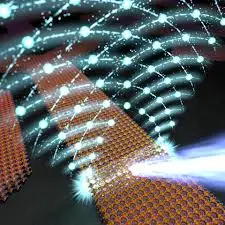Technology
technology encompasses a wide variety of meanings, all focused on making tasks easier and improving people’s lives. It uses specialized knowledge and tools to modify the environment, perform tasks more easily, or boost economic and social development. It is classified according to its applications and objectives, which allows us to distinguish different types of technology.
Classification of technology according to its applications and purposes
Technological advances have transformed every aspect of our lives, from how we communicate to how we work and entertain ourselves. Given the vast range of innovations, it is essential to classify them based on their applications and purposes. In this way, it is possible to better understand their impact and potential.
This classification allows us to see how different uses can meet specific needs in areas such as health, education, industry and entertainment. It also helps us to recognize the purpose and benefits that each type brings to our society, facilitating their adoption and strategic development:
- Clean technology and materials.
- Soft and hard technology.
- Flexible and fixed technology.
- Operating technology, equipment and product
Clean technologies and material
Clean technology uses natural resources efficiently and without causing environmental damage. It focuses on sustainable resource management, the use of alternative energy sources such as wind and solar, and minimizing pollution.
- Examples : Solar energy, wind energy, efficient water management.
These varieties are increasingly important for the economy and the environment. The fight against climate change and the transition to a green economy are two of the factors that justify this. Sustainability and the decreasing use of fossil fuels make it one of the main solutions for a new economic and social model.
Materials technology covers a broad spectrum of applications, including physics, medicine and chemistry. It focuses on the development and use of advanced materials to improve the quality of life and performance of products.
- Examples : Electronics, nuclear technology, advanced chemistry.
Virtually every aspect of our modern lives, from the devices we use every day to the infrastructure that supports our cities, is shaped by it.
For example, new conductive materials are revolutionising flexible electronics, while biomedical materials are enabling safer and more effective devices. Lighter, stronger materials make it possible to produce more fuel-efficient vehicles. It has influenced advances in everything from construction to aviation to medicine.
Soft technology
Soft technology refers to intangible knowledge and processes related to administration, management and planning. It is crucial for the development and execution of technological projects without a tangible physical presence.
It focuses on more abstract aspects related to human skills, such as management and administration, strategic planning or personal development. In turn, the ability to generate innovative and creative ideas is a key skill in soft technology.
- Examples : Management software , agile methodologies, strategic planning.
Hard technology
Hard technology involves the production of physical goods and materials through technical processes. It is tangible and is used in the manufacturing and construction of products and structures.
- Examples : Industrial machinery, electronic devices, infrastructure.
For example, robotized assembly lines in the automotive industry are a clear example of how it facilitates mass production of vehicles. It does so by precisely automating assembly processes. The same applies to other sectors, such as construction, engineering or consumer goods production.
There are manufacturing processes including 3D printing, metalworking, and precision electronics. All of them require specialized equipment and tools.
Flexible and Fixed technologies
Fixed technology is designed to perform a specific function and is not usually changed, except on specific occasions to improve performance. Its application is limited to a single purpose or industry.
- Examples : Technology in the cement industry, steel industry.
More specifically, we see it in machines such as hydraulic presses, smelting furnaces, and automated assembly lines in automotive manufacturing. Other examples are tools such as CT scanners in the medical field and magnetic resonance imaging equipment. These are fixed technologies due to their application restricted to specific diagnostic tasks.
Another of the existing technologies worth highlighting is the so-called flexible technology . It can be applied in a multitude of functions and processes, combining materials, knowledge and tools to adapt to different requirements.
- Examples : General purpose software , adaptable machinery, multifunctional tools.
Collaborative robots , or cobots, are a prominent illustration of flexible technology in the manufacturing industry. They are designed to work alongside humans on disparate tasks. They assist in processes ranging from assembly to material handling.
Operational technologies
Operational technology evolves over time by combining knowledge and devices to improve processes and techniques . It is crucial in continuous improvement and technological innovation.
- Examples : Industrial automation, process management systems, advanced manufacturing techniques.
Equipment technologies
Equipment technology consists of procedures and tools used in manufacturing, research and development. It represents a basic pillar for efficient production and innovation in various industries.
- Examples : Laboratory equipment, production machinery, diagnostic tools.
Product technologies
Product technology focuses on creating specific products by combining knowledge and tools. It drives the production of customized goods and services.
-
- Examples : Medical devices, electronic products, specialized software.
Conclusion: Types of Existing technologies
In today’s rapidly evolving landscape, technologies can be categorized into various types that serve different purposes and industries. Here’s a brief overview of some key types:
- Information Technology (IT)
Encompasses computing systems, software, and networks used to store, process, and communicate information. - Communication Technology
Includes tools and systems that facilitate communication, such as the internet, mobile devices, and telecommunication systems. - Industrial Technology
Involves the use of engineering and manufacturing processes, including automation and robotics, to improve production efficiency. - Biotechnology
Combines biological sciences with technologies to develop products and processes in fields like medicine, agriculture, and environmental science. - Environmental Technology
Focuses on sustainable practices and technologies that minimize environmental impact, such as renewable energy sources and waste management systems.
FOR FERDUR INFORMATION:https://proteomics.uk/




